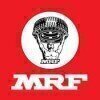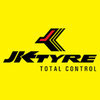Filter interviews by
Gowell Rubber Industries Quality Engineer Interview Questions and Answers
Gowell Rubber Industries Quality Engineer Interview Experiences
1 interview found
(1 Question)
- Q1. Types of defects in Rubber industries
- Ans.
Common types of defects in rubber industries include air bubbles, surface imperfections, contamination, and dimensional variations.
Air bubbles: trapped air pockets in the rubber material
Surface imperfections: scratches, dents, or marks on the surface of the rubber
Contamination: foreign particles or substances mixed with the rubber
Dimensional variations: inconsistencies in size or shape of the rubber products
Interview Preparation Tips
Top trending discussions






Interview questions from similar companies

Quality Engineer Interview Questions & Answers
Seoyon E-hwa Automotiveposted on 1 Apr 2024
I applied via Approached by Company and was interviewed in Mar 2024. There were 2 interview rounds.
(1 Question)
- Q1. Basic information 1st level interview only
Quality countermeasure precentstion

I applied via Naukri.com and was interviewed before Jul 2023. There was 1 interview round.
(2 Questions)
- Q1. Drawing Reading
- Q2. What is GD And T in drawing
- Ans.
GD&T stands for Geometric Dimensioning and Tolerancing, a system for defining and communicating engineering tolerances on drawings.
GD&T is a symbolic language used on engineering drawings to specify the allowable variations in form, size, and orientation of features.
It uses symbols, such as squares, circles, and triangles, to define the tolerance zones for features on a part.
GD&T helps ensure that parts are manufacture...

I applied via Company Website and was interviewed in Feb 2021. There were 4 interview rounds.
Interview Questionnaire
5 Questions
- Q1. What is 5S?
- Ans.
5S is a workplace organization method that aims to improve efficiency and productivity by eliminating waste and optimizing workflow.
Sort - separate necessary items from unnecessary ones
Set in order - arrange necessary items in a logical and efficient manner
Shine - clean and maintain the workplace
Standardize - establish procedures and guidelines for maintaining the 5S system
Sustain - continuously improve and maintain th...
- Q2. What is 7QC Tool ?
- Ans.
7QC Tool is a set of 7 quality control tools used for process improvement and problem-solving.
The tools are: Pareto Chart, Cause-and-Effect Diagram, Check Sheet, Control Chart, Histogram, Scatter Diagram, and Flow Chart.
They help in identifying and analyzing problems, and finding solutions.
For example, a Pareto Chart can be used to identify the most frequent problems in a process, while a Cause-and-Effect Diagram can h...
- Q3. What is Kizen ?
- Ans.
Kaizen is a Japanese term for continuous improvement.
Kaizen involves making small, incremental changes to improve processes and systems.
It is a key principle of Lean manufacturing and Six Sigma methodologies.
Kaizen encourages employee involvement and empowerment in the improvement process.
Examples of Kaizen include reducing waste, improving efficiency, and enhancing quality.
Kaizen is a long-term approach to improvement
- Q4. About yourself.
- Q5. Previous work related Question.
Interview Preparation Tips

Interview Questionnaire
2 Questions
- Q1. How make resume how to mantion necessary information. And how to introduce myself.
- Q2. What point mation resume to make perfect resume

I applied via Naukri.com and was interviewed in Oct 2023. There was 1 interview round.
(6 Questions)
- Q1. Lots of questions
- Q2. Question for your achievement
- Q3. Question for your best development in organization
- Q4. Question for your best problem solving approach
- Q5. Question for your best QIP projects
- Q6. Questions for your best innovative ideas implementation

Interview Questionnaire
3 Questions
- Q1. Dear sir,
- Q2. I am ready ( interested ) to this job
- Q3. My experience 2 year 10 month in quality control

Quality Engineer Interview Questions & Answers
Seoyon E-hwa Automotiveposted on 30 Aug 2023
I applied via Approached by Company and was interviewed before Aug 2022. There were 2 interview rounds.

(5 Questions)
- Q1. Ppap isir documents
- Q2. Apqp explain action
- Ans.
APQP (Advanced Product Quality Planning) is a structured method for defining and establishing the steps necessary to ensure that a product satisfies customer requirements.
APQP is a quality framework used in the automotive industry to ensure product quality and customer satisfaction.
It involves defining and documenting the product and process design and development activities.
APQP includes tasks such as identifying pote...
- Q3. 7QC tool explain andtribe4 tools
- Ans.
7QC tools are a set of quality control tools used for process improvement. Tribe4 tools are a specific set of tools used in Lean Six Sigma methodology.
7QC tools include Pareto chart, cause-and-effect diagram, check sheet, control chart, histogram, scatter diagram, and flowchart.
Tribe4 tools are specific to Lean Six Sigma and include value stream mapping, 5S, standard work, and visual management.
These tools help in iden...
- Q4. To define the Pas and MSA
- Ans.
PAS stands for Process Analysis Study and MSA stands for Measurement System Analysis.
PAS is used to analyze and improve processes within an organization.
MSA is used to assess the measurement system's capability and reliability.
PAS involves identifying process inputs, outputs, and key performance indicators.
MSA includes studies like Gage R&R to evaluate measurement system variation.
Both PAS and MSA are essential tools f...
- Q5. APQP advanced technology

I applied via Naukri.com and was interviewed before Jul 2023. There was 1 interview round.
(2 Questions)
- Q1. Drawing Reading
- Q2. What is GD And T in drawing
- Ans.
GD&T stands for Geometric Dimensioning and Tolerancing, a system for defining and communicating engineering tolerances on drawings.
GD&T is a symbolic language used on engineering drawings to specify the allowable variations in form, size, and orientation of features.
It uses symbols, such as squares, circles, and triangles, to define the tolerance zones for features on a part.
GD&T helps ensure that parts are manufacture...

I applied via Referral and was interviewed before Aug 2022. There were 4 interview rounds.

General & company history related
(1 Question)
- Q1. Family background and previous experience
(4 Questions)
- Q1. Questions from Previous experience
- Q2. Work flow of last company
- Q3. Role in last company
- Q4. Knowledge of document
Gowell Rubber Industries Interview FAQs
Tell us how to improve this page.
Interview Questions for Popular Designations
- Quality Inspector Interview Questions
- Senior Quality Engineer Interview Questions
- Quality Controller Interview Questions
- Quality Assurance Interview Questions
- Quality Manager Interview Questions
- Quality Executive Interview Questions
- Quality Assurance Officer Interview Questions
- Executive Quality Assurance Interview Questions
- Show more
Quality Engineer Interview Questions from Similar Companies
|
Engineer
4
salaries
| ₹3.5 L/yr - ₹4.1 L/yr |
|
Account Assistant
4
salaries
| ₹2 L/yr - ₹5 L/yr |
|
Production Engineer
3
salaries
| ₹3 L/yr - ₹3 L/yr |
|
Manager new Product Development
3
salaries
| ₹2.6 L/yr - ₹7.5 L/yr |
|
Development Engineer
3
salaries
| ₹2.2 L/yr - ₹3 L/yr |

MRF Tyres

JK Tyres

Apollo Tyres

Ceat Tyres
- Home >
- Interviews >
- Gowell Rubber Industries Interview Questions >
- Gowell Rubber Industries Quality Engineer Interview Questions






